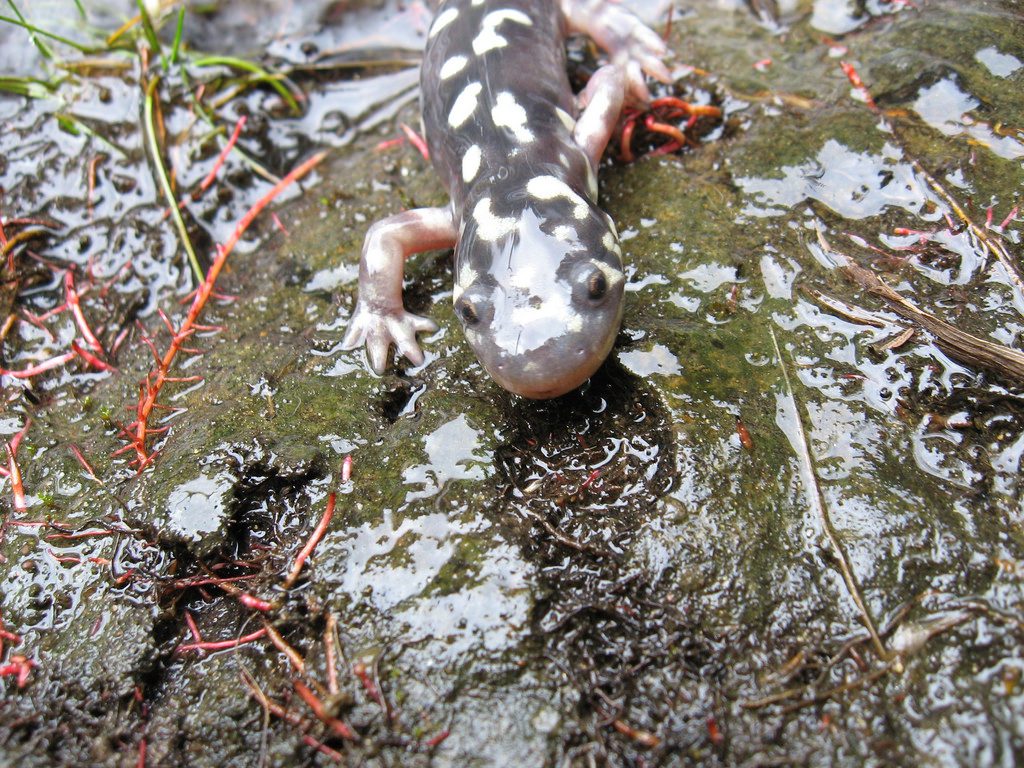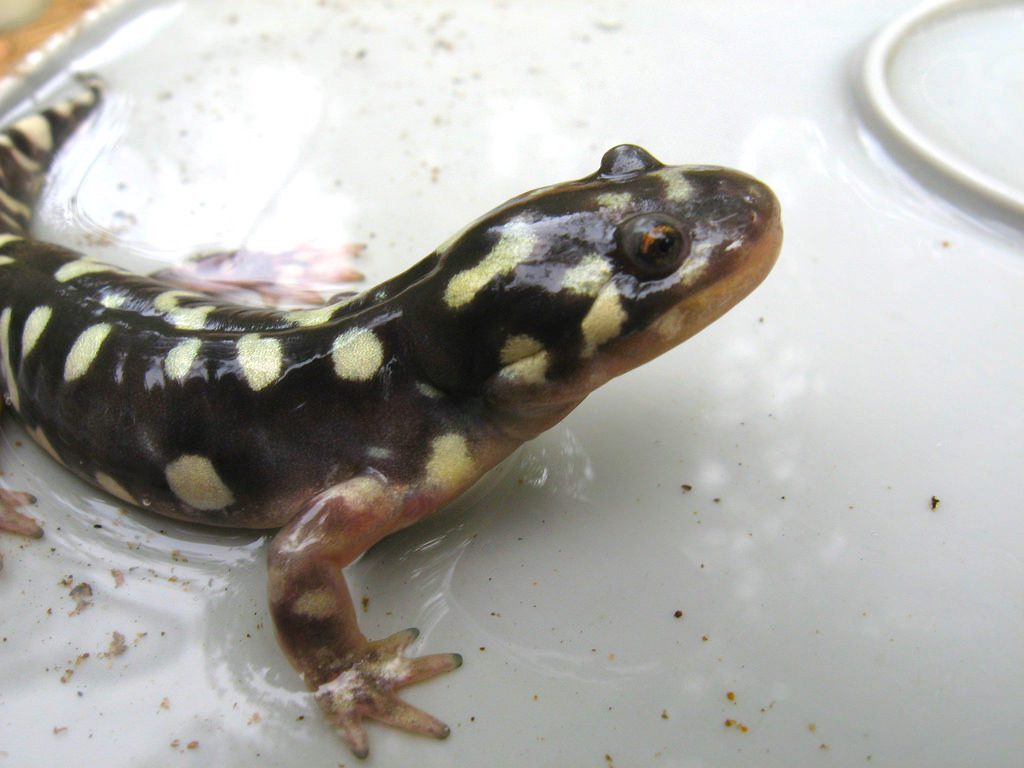Friday October 15, 2021

In today’s Flashback Friday we explore the mysterious life of the salamander.
Secretive salamanders often live out of sight, creeping out of their burrows at night or when things are wet – times when people are not likely to be around. Salamanders are nevertheless a priority for conservationists and wildlife biologists because of their complex interactions with the environment and with other species. Even though they may be found in our own back yards, researchers are still discovering new things about salamanders. For example, scientists recently discovered that a species of algae (Oophila amblystomatis) actually lives within the cells of spotted salamanders (Ambystoma maculatum) (Burns et al. 2017), the only known symbiosis of its kind in a vertebrate species. They are still unsure what benefit the algae brings to the salamander, and vice versa. Another close relationship is one between the California tiger salamander (Ambystoma californiense), shown above, and the California ground squirrel. Salamanders live in the squirrel burrows when it rains, and only come out to mate if vernal pools appear nearby. Many rarely studied salamander species are simply unique and amazing, including the one-toed, two-toed, and three-toed Amphiuma species or the limbless, giant-worm-like caecilians.
However, many salamander species may not be able to survive very much longer in the wild because of habitat destruction and the spread of a new disease, known as Bsal (Batrachochytrium salamandrivorans). Bsal, or salamander chytrid, has spread across Europe in the last few years (Spitzen-van der Sluijs et al. 2016), leading to major declines in salamanders that are already stressed by climate change and habitat destruction. Scientists think the disease will eventually make its way to the United States, and cause even worse impacts than the similar disease-causing fungus (Batrachochytrium dendrobatidis) that is responsible for declining frog and toad populations worldwide). Like frogs, salamanders are highly sensitive to changes in the environment due to their absorbent skin. Salamanders have shown a disturbing and unexplainable downward trend recently, with half of all species listed as threatened or already extinct, according to the International Union for the Conservation of Nature Red List of Threatened Species.

Some salamander species have persisted, although endangered, through major alterations and damage to their environment caused by humans. The axolotl (Ambystoma mexicanum) and the Barton Springs salamander (Eurycea sosorum) have only a few surviving individuals living in small pools located within densely populated cities. The California tiger salamander lives in the heavily-farmed fields of the Central Valley, but a few simple solutions have been implemented to help them survive, such as highway under-crossings and habitat exchange programs for ranchers. Because so many salamanders are endangered and so much remains to be discovered about their biology, scientists want to help conserve as many salamander species and habitats as they can. And not just because they are cute! Animals, including amphibians have been a leading source of new chemical compounds that are used in medical applications and the treatment of diseases. Cures made possible by animals include the use of compounds found in snake venom to treat stroke victims, and compounds found in lizard saliva to treat diabetes. Our staff at FISHBIO have only had the opportunity to spot a few salamanders while out doing field work, but we have to admit they are pretty adorable.
